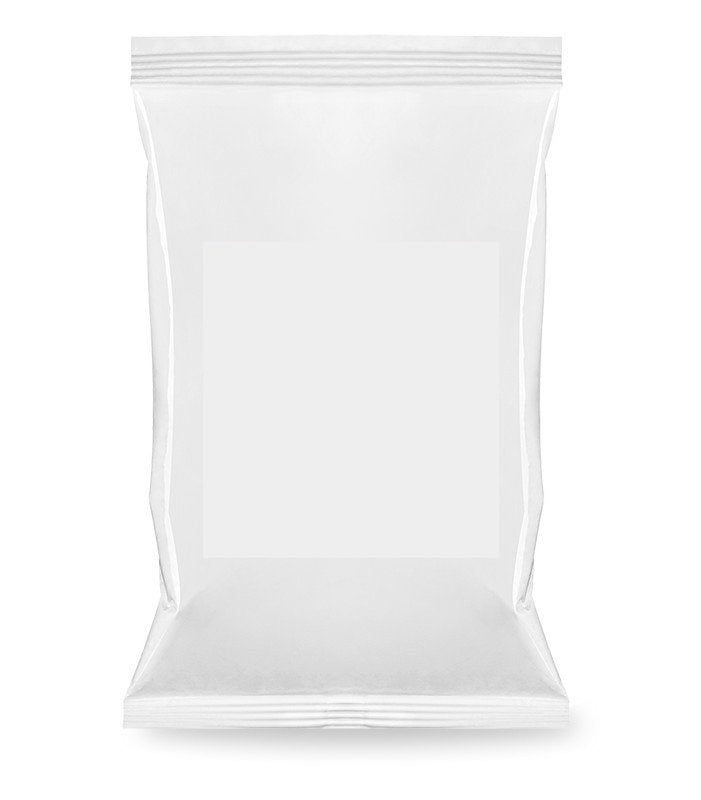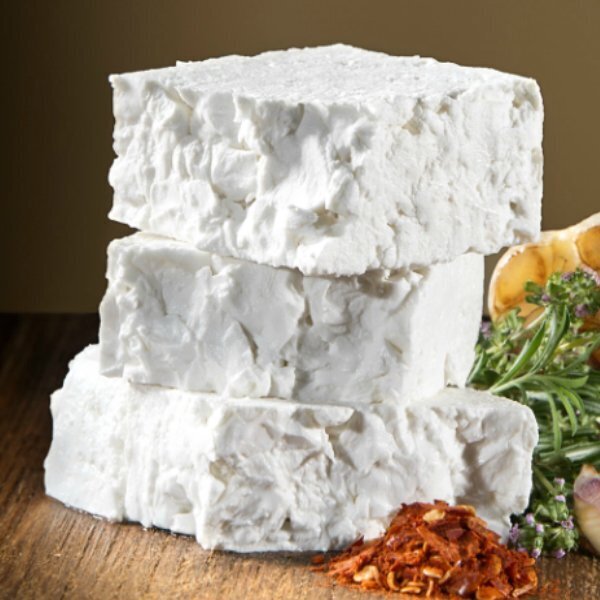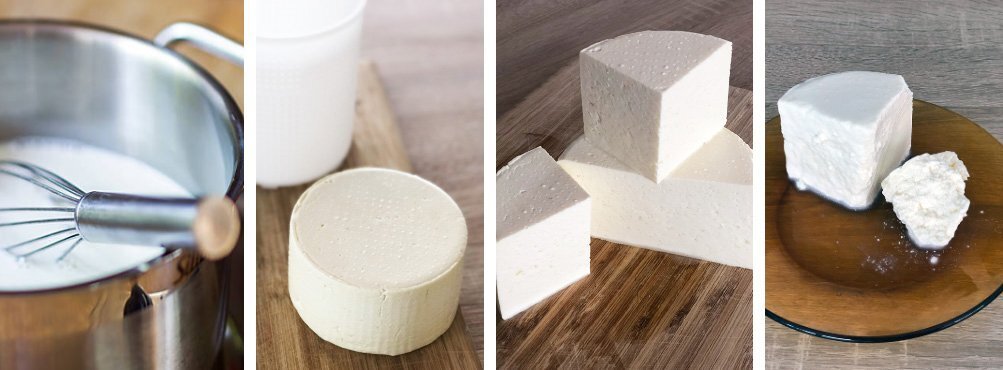BULGARIAN SIRENE CHEESE STARTER makes 1 liter
BULGARIAN SIRENE CHEESE STARTER makes 1 liter
Couldn't load pickup availability
Our Bulgarian Sirene (hard white brined cheese, similar
to feta cheese) starter makes a delicious sirene that turns out
perfectly every time.
Whether you like your sirene crumbly or creamy with excellent taste
and great aroma, it’s never been easier to make your own sirene.
Bulgarian Sirene is a type of hard white cheese. It is very similar
to the feta cheese variety but has a sharper, tarter taste and the most
delicious aroma you can imagine thanks to the presence of lactobacillus
bulgaricus lactic acid bacteria.
Each pack contains loose powder mix, in perfect proportions, of a
collection of bacterial strains required to make sirene, amongst
which — the ubiquitous lactobacillus bulgaricus and streptococcus
thermophilus.
Storage
Best to store in the FREEZER.
Use by the date indicated on the label.
Bacillus Bulgaricus starters are shipped in sealed sachets.
Transporting the packs (i.e. shipping them
to you) at ambient temperatures (even in the warmest climates) is
perfectly OK and will not damage the live cultures. We use a
freeze-dried process that keeps the strains alive and comfortable even
during long trips in hot weather.
Once you receive your starter packs – pop them in the freezer for best storage.
Unfreezing the starter packs and freezing them again (e.g. when using only a portion) is OK to do, even multiple times.
It is easy to make Bulgarian sirene using Bacillus Bulgaricus Sirene starter culture.
It only takes a few easy steps to make your own hard white brined cheese, or otherwise known as sirene (aka Bulgarian feta).
You can use any kind of milk you want — cow’s, sheep’s, goat’s, skim,
whole, raw, pasteurized, dairy (unfortunately this does not work with
non-dairy milk), it will make some great sirene! Just avoid using
ultra-pasteurized or UHT milk because the taste of your sirene won’t
turn as good. For best results, we recommend using whole milk.
The instructions below are for treating 1 gallon (4 litres) of milk
so you need to adjust them accordingly for other quantities. 4 litres (1
gallon) of milk make about 800 grams (1.6 lbs) of white brined (sirene)
cheese.
Ingredients and Utensils
- 1 gallon (4 litres) of milk
- 4 packs of Bacillus Bulgaricus Sirene Starter culture (it’s best to
use the entire pack so make sure you get a pack for the same volume of
milk you are treating) - 1/4 teaspoon liquid rennet (you can easily find rennet online or in your local grocery store)
- 1/4 teaspoon liquid calcium chloride (if you are using pasteurized milk, you don’t need the CaCl2 for raw milk)
- Salt
- Cheese cloth – you’ll strain the cheese in it. Butter muslin or clean sterile handkerchiefs at the least
- Strainer or colander – you’ll drain the curds in it. Make sure your sterilize it with hot water before using it
- Cheese mold – you’ll shape and brine the cheese in it. If you don’t have one, basically any container would do.
- Food thermometer – can do without but it’s always handy to have one
- Ladle – you’ll scoop up the curds with it. A large spoon works well too
- Knife – you’ll cut the curds with it so a longer one is better
Traditional Bulgarian Cheese Making Instructions
Use this method if you prefer to make your Bulgarian sirene the traditional way.1. Prepare the milkIf using raw milk, heat the milk to 165-172°F (74-78°С) and holdthere for about 5 minutes. That way you make sure that any existing
external bacteria in it, which could react with the Sirene culture, is
killed. Then cool the milk down to 93-97°F (34-37°C).If using pasteurized milk, you can simply heat the milk to 93-97°F (34-37°C).If using pasteurized milk, you will need to add CaCl2 at
this step. Dissolve 1/2 tsp of calcium chloride in 1/4 cup cool,
non-chlorinated water and add to the milk (you can also dissolve the
CaCl2 directly into the milk).Note: Commercial pasteurization pulls a certain amount of
calcium from the milk during the process. Adding calcium chloride to the
milk makes up for this loss, helps produce firmer setting curds during
separation making it easier to cut and resulting in yielding more
cheese. Adding Calcium Chloride at this step is a good idea in general.2. Culture the milkAdd the Bacillus Bulgaricus Sirene Starter culture to the milk. To
prevent the powder from caking and clumping, sprinkle the contents of
the pack over the surface of the milk and then allow about 2-3 minutes
for the starter to hydrate before stirring it in. Then stir it into the
milk using a gentle up-and-down motion so it distributes thoroughly. Do
so for about 5 minutes.Note: At no time whisk. Whisking introduces air bubbles into the milk and that slows down incubation.3. Let the starter work its magicCover the pot with the milk and allow it to sit for about an hour to
allow the bacteria to begin working. There is no need to maintain the
temperature of the milk during this time, it’s OK for it to slowly cool
down to about 86-88°F (30-32°C).Note: If you prefer
your Bulgarian Sirene with more tang, simply let it sit for longer. pH
is a function of time so the longer the bacteria works, the more acidic
the milk gets and the tangier the cheese gets too.4. Coagulate with rennetDilute 1/4 tsp (1.5 ml) of the liquid rennet in a 1/4 cup cool water
(make sure you use non-chlorinated water – spring, mineral, filtered are
all ok).Add the diluted solution to the milk while stirring slowly. Continue
to slowly stir with the up and down motion for another 2-3 minutes.Cover the container and let it sit for about an hour. The culture
will continue to work while the rennet coagulates the milk into curds.Again, there is no need to maintain the temperature of the milk
during this time, it’s OK for it to slowly cool down but try to keep it
no lower than 86-88°F (30-32°C), i.e. apply a little heat if necessary,
just exercise caution – you don’t want to cook the curds.5. Check if curd is readyAt this point the milk should have transformed into a sold mass of
curd surrounded by a small amount of liquid whey. To check if the milk
is fully set, push the side that is touching the container in using a
spoon or a knife. Milk is ready for the next step if the separation is
clear. If the line of separation is still blurry, re-cover the pot and
let it sit for another 15 minutes then test again. Repeat until it is
ready.6. Cut the curdCut the curd into 2 inch (4cm) squares using a knife. Try to cut so
that pieces are more or less the same size. The larger these pieces the
moister the final cheese is going to be so you can play with those to
customize your cheese to your preference.Let the curds sit for another 10 minutes. This helps more whey to separate.Note: Gently
stirring the curds at this point for another 10 minutes will help more
whey separate. The firmness of your final cheese depends on the time
stirred in whey. The longer you stir, the firmer your curds will become
and the firmer and sharper your final cheese will be (more like Greek
feta).If you prefer a milder crumblier cheese (much like the original
Bulgarian sirene) then don’t stir the curds. That way they will preserve
their moisture and allow for a slow and steady acidification and the
final tang at molding will be milder.7. Drain the CurdNext, we need to drain the curds. When you do so, make sure you save the whey because you will need it for the brine.Line a colander with the muslin or cheesecloth, letting excess cloth
hang over the sides of the colander. Gently ladle the curds into the
colander. Let the curds drain for about 30-60 minutes, or until there is
little whey visible around the curds. If using a cloth simply tie the
corners of the cloth into a sack, put a wooden spoon through the knot
and let it hang inside a tall pot or a bucket.The whey should be draining out as a steady light stream for most of the time.After the initial draining time, open the cloth, cut or break the
curds up into smaller pieces (about half their initial size) then tie
the cloth together with the curds bundled inside, put it on its knot and
allow it to rest for another hour. If you would like to drain the curds
faster, put some weight on top of the cloth with bundled curds so the
pressure can assist the drainage (just make sure they are well tied up
snugly inside so they don’t leak out when you do that).After the second draining time, repeat the same curd breaking
procedure, re-tie the cloth, and let it drain again for another hour.In general, shorter draining time will create a smoother creamier
textured cheese while longer draining will create a drier crumblier
cheese.Note: You can use the drained whey either for the brine in which you will age the cheese or to make ricotta.8. Make the BrineNow is a good time to make the brine while you are waiting for the
curds to drain. Of course you can do it at a later point too because you
will need it only when the cheese is ready to be aged.Use a container that is large enough to house the cheese but not too large.Brine is made of water and salt and we will be using the whey that
drained from the curds. Using the whey is good because it contains all
the milk solids that didn’t form into curds.Traditional brine is made from a ratio of 1 cup of salt to 1 gallon
(4 litres) of water but you can experiment and add more or less
depending on how salty you like your cheese. I usually aim to make an 8%
salt brine (which simply means that the weight of the salt is 8% of the
weight of the brine). A good rule of thumb is add a tablespoon of salt
per cup of brine.Keep the brine in the fridge for now until you need it.9. Shape the CheeseAfter about all the draining (total time about 4 hrs) the curds
should be ready to be placed in the cheese mold. Ideally you should use a
mold similar to the one on the pictures but if you don’t have that, any
container that allows drainage would do. If your container has larger
wholes (like a basket for example) simply line it up with muslin or
cheesecloth to hold the cheese in shape and prevent it from leaking out.Transfer the drained curds to the mold. While you do so, press them
down lightly as you go to consolidate them a bit, just try not to break
them too much.When all the curds are in, put a light weight on top of them, inside
the mold, to keep them pressed down to release more whey and help
further consolidate the curds in the mold.As the cheese making strains are still producing lactic acid, make
sure that you keep the mold warm or at least room temp – 72-82°F
(22-28°C) is ideal.Allow the cheese to shape and further drain overnight. After about 6
hours you can remove the weight (or you can leave it till the end).Cheese will shrink down and form inside the mold. It will be visibly hard at this point.Note: If you have a
pH meter you can measure the cheese – it should be around 4.7-4.9pH. If
not, you can simply taste the drained whey – it should taste somewhat
sharp and acidic.10. Salt the cheeseNow that the cheese has shaped, it is time to cut it in chunks and
salt it. Take the cheese out of the mold and cut it into chunks (size
doesn’t really matter). The smaller the pieces the more salt they will
absorb quicker.Generously salt all sides of pieces. I like to use a more coarse salt
(like kosher or fleur de sel) but finer salt will do too. If you need
guidelines as to how much salt to use — use about 5-8% of the weight of
the cheese. Use about 1/3 of the salt for this first salting.Leave at room temperature for 24 hours turning the pieces every once
in a while, adding more salt to the wet areas. Salt will further extract
moisture from the cheese. Keep covered with a muslin or a cloth in a
cool dry place (pantry or in the refrigerator is also ok). Over the next
3 days, drain off the whey and flip the pieces over once or twice a
day.Once the salting step is complete, the cheese needs to rest for
another 1-2 days while the salt is absorbed and the initial maturation
begins. The changes that take place to the cheese during this time help
cheese stay firm during the brine aging phase.11. Brine the cheeseTake out your brine, or if you haven’t prepared one, make it now.If you did not use the drained whey to make the brine, add 1/2 tsp
calcium chloride for each gallon (4 litres) of brine. This will keep the
brine from pulling calcium from the cheese. It’s a good idea to add
CaCl2 to the brine in general regardless as it helps cheese stay firmer for longer.Place the cheese pieces into the container with the brine. Make sure
the container is filled with brine to the top to avoid mold development.The cheese can be aged in brine for just a few days and up to several years. It gets sharper in flavor as it matures.Note: If you notice that the brine gets cloudier in a few days and
your cheese is dissolving in it then this means that the calcium is
stripped from the cheese and its surface will deteriorate in a matter of
days. If that happens, simply try to consume the cheese quickly before
it falls into pieces. And next time use more CaCl2 when preparing the brine.Done! Your cheese is ready to be enjoyed!
Share





